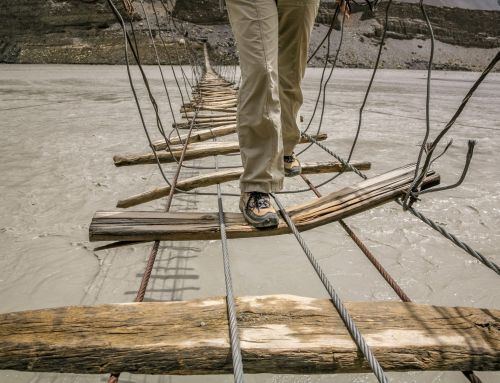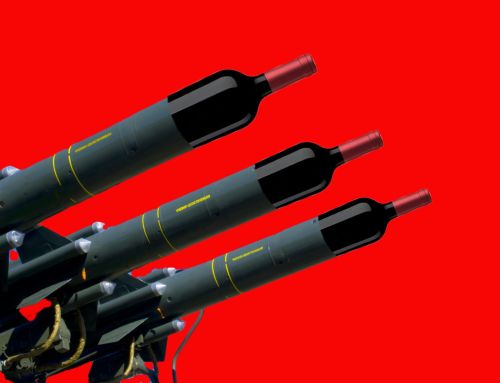 With the approval today of Candy Mountain as an American Viticultural Area (AVA), Washington gained its 16th federally recognized grape growing region. The appellation comes close on the heels of Royal Slope, which was approved earlier this month.
With the approval today of Candy Mountain as an American Viticultural Area (AVA), Washington gained its 16th federally recognized grape growing region. The appellation comes close on the heels of Royal Slope, which was approved earlier this month.
“It has the potential to be the most visible AVA in the state,” says geologist Kevin Pogue.
This is not hyperbole.
Many appellations in Washington are either quite large in size, a bit off the beaten path, or both, making them difficult to easily visualize. With Candy Mountain small, discrete, and bordered by Interstate 82 on one side and I-182 on another, the prominence is unmissable to travelers going to and from the Tri-Cities, where it takes a commanding, central view as it rises up from the surrounding Pasco Basin.
At 815 total acres, Candy Mountain is by far Washington’s smallest appellation, a distinction previously held by Red Mountain (4,040 acres). In fact, lying just four miles to the southeast, Candy Mountain shares other attributes with that esteemed appellation beyond its diminutive size.
“It’s pretty much a Red Mountain lookalike,” says Marty Clubb, co-owner and managing winemaker at
L’Ecole No. 41, which has been sourcing fruit from Candy Mountain since 2002. “It’s warm, like Red Mountain. Compared to other areas, you typically see richer structure, a little more extraction, riper fruit flavors. Pretty healthy tannin levels.”
Winemaker Seth Kitzke, whose family owns
Kitzke Cellars, the only winery on Candy Mountain, agrees the two appellations share commonalities.
“When you try the wines, I feel like there are more similarities between the two AVAs than differences,” Kitzke says. “I don’t think you get as much direct wind [on Candy Mountain] because Goose Ridge is across the valley, so the tannin structure maybe isn’t as big as Red Mountain. But the fruit character, the ripeness levels, and your timing with harvest, you’re sure not far behind them.”
Like Red Mountain, Candy Mountain is part of the Yakima Fold Belt, a series of buckles in the earth. Grape growers have leveraged these buckles by planting on their southern aspects, allowing vines to soak up the sun’s heat. To wit, the Rattlesnake Hills, Snipes Mountain, Horse Heaven Hills, and Royal Slope appellations are also on Yakima Fold Belt structures. These folds also provide good air drainage, which helps protect against frosts and freezes.

“People have figured out that the south facing sides of Yakima Fold Belt anticlines are great places to grow grapes,” says Pogue, who owns the vineyard and terroir consulting company
VinTerra and was contracted to write the Candy Mountain application.
Elevations in the appellation range from 640 to 1,360 feet above sea level, with slopes between five and 20 degrees. Soils are made up of windblown sand and silt above basalt bedrock, with a layer of gravel or slackwater sediment in between the two below 1,200 feet. All of the appellation is located on the mountain’s southwestern side.
“My guiding principles were southern aspect and sloped terrain,” Pogue says.
Long Shadows winemaker Gilles Nicault has been working with Candy Mountain fruit for 17 years. He says the appellation’s elevation and aspect are key.
“What I really like about [Candy Mountain] is it has this perfect terroir,” Nicault says. “It’s a beautiful, small, uniform slope facing south. It’s the perfect elevation in my mind.”
Nicault says Candy Mountain’s warm summer days lead to ripe fruit flavors.
“The exposure is always yielding fruit that has a very nice physiological maturity, not necessarily at lower sugar, but at beautiful ripening of the phenols and the flavors and great intensity of color.”
The Candy Mountain appellation proposal was spearheaded by Ramer Holtan, a retired lawyer who first purchased land on the mountain along with a group of investors in 2001. Holtan now owns 290 acres in the area and leases another 107, although some of this land lies outside the appellation’s boundaries.
“I got excited about what was happening in eastern Washington,” Holtan says of petitioning to have Candy Mountain recognized as its own growing region.
Holtan has partnered with others to plant 58 acres on the mountain, with the vineyard’s first harvest this year. In total, the appellation has 110 acres in production, with much of it planted to Cabernet Sauvignon, Merlot, Syrah, and Sangiovese.
“It’s a special site,” Holtan says of Candy Mountain, a sub-appellation of Yakima Valley as well as the larger Columbia Valley. “Except for what’s planted now, it’s generally a blank canvas. It’s pretty exciting.”
While the Candy Mountain appellation undoubtedly will have great visual prominence to people passing by the area, it’s unlikely to have great vinous prominence in the near term. In addition to the small amount of planted and total acreage, much of the fruit currently goes into larger, Columbia Valley designated blends. This means, even with the appellation’s approval, there will not be a rush of Candy Mountain labeled wines hitting the shelves any time soon.
Still, with Candy Mountain’s newfound appellation status and additional acreage planned, that could change in the longer term. L’Ecole, for one, has already made a Candy Mountain Vineyard designated wine in some previous vintages, with impressive results.
“We had a lot of customers who really loved those wines,” Clubb notes.
For now, Washington wine lovers will have to make due enjoying Candy Mountain wines from Kitzke Cellars,
Succession, and
Liberty Lake Cellars, as well as Candy Mountain-heavy wines from Long Shadows and L’Ecole as they celebrate the state’s newest appellation.
But make sure to leave some bubbles in the cellar. While Washington’s 16th appellation sure is sweet, the state currently has a number of other appellation applications pending.
NB: Succession’s 2018 Syrah is from Candy Mountain Vineyard as is Liberty Lake Cellars 2017 Tahija Sangiovese and 2019 Rosé. For Long Shadows, Candy Mountain fruit comprises significant parts of the Saggi (specifically part of the Sangiovese component); Chester-Kidder (specifically Cabernet Sauvignon), and Pedestal (part of the Merlot in this wine). For L’Ecole, Candy Mountain fruit makes up significant parts of the winery’s Columbia Valley Merlot, Cabernet Sauvignon, and Syrah.
Images courtesy of Kevin Pogue.
With the approval today of Candy Mountain as an American Viticultural Area (AVA), Washington gained its 16th federally recognized grape growing region. The appellation comes close on the heels of Royal Slope, which was approved earlier this month.
 “People have figured out that the south facing sides of Yakima Fold Belt anticlines are great places to grow grapes,” says Pogue, who owns the vineyard and terroir consulting company VinTerra and was contracted to write the Candy Mountain application.
“People have figured out that the south facing sides of Yakima Fold Belt anticlines are great places to grow grapes,” says Pogue, who owns the vineyard and terroir consulting company VinTerra and was contracted to write the Candy Mountain application.






Leave A Comment